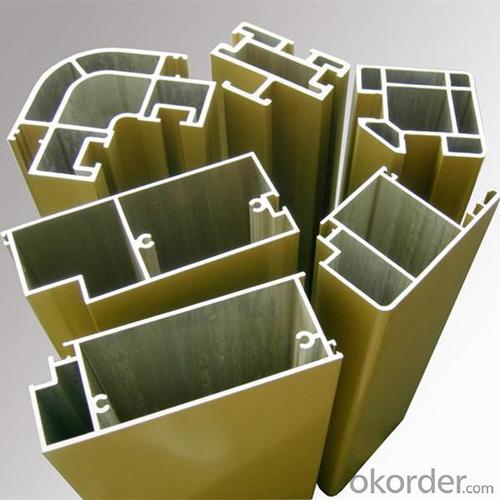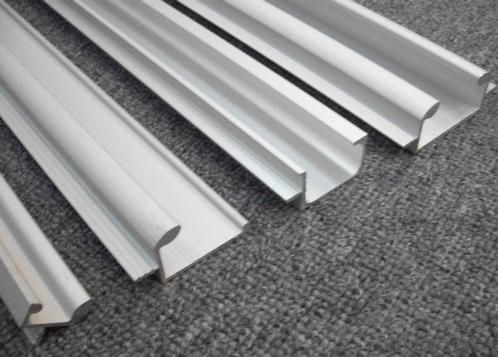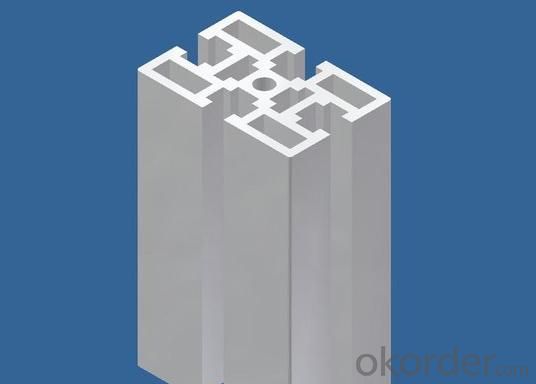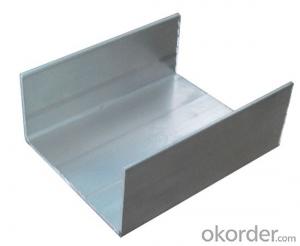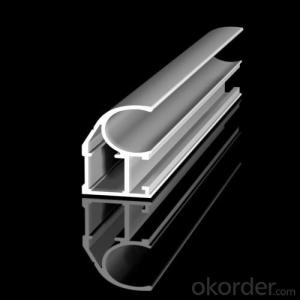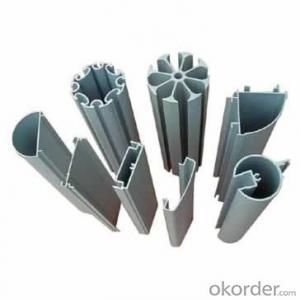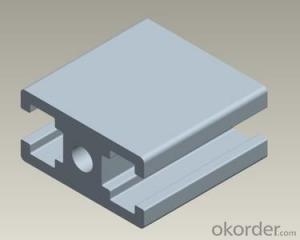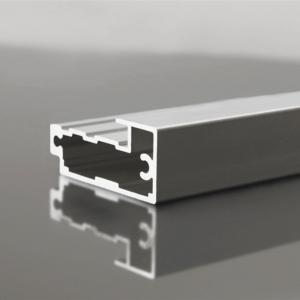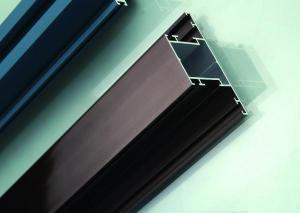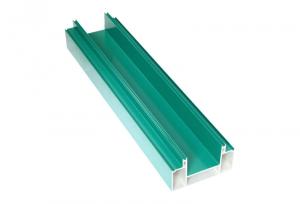Aluminum Profiles Extrusion 6081-T5
- Loading Port:
- ShenZhen
- Payment Terms:
- TT or LC
- Min Order Qty:
- 5 Tons m.t.
- Supply Capability:
- 1000 Tons Per Month m.t./month
OKorder Service Pledge
OKorder Financial Service
You Might Also Like
1 Specifications of Aluminum Profiles 6081-T5
Alloy Number | 6063 6061 6060 and different aluminium alloy |
Temper | T4 T5 T6 or other special status |
Surface available | Mill finish, Anodized, Powder Coating, Wooden transfering, electrophoresis, heat insulation, PVDF, and deep processing |
Thickness: | >0.8mm |
Width: | <300mm |
Standard | GB5237.1-2008 |
Special Specification is available on customer’s requirement
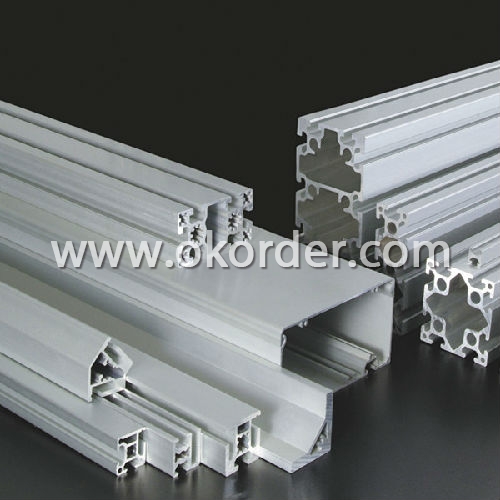
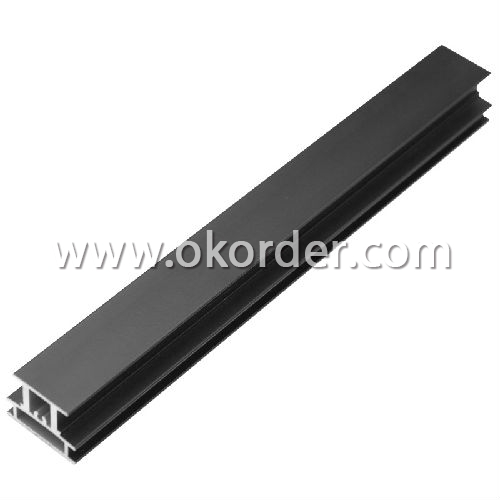
2 Usage/Applications of Aluminum Profiles 6081-T5
Aluminium Profiles are widely used in construction(windows & doors,curtain wall), decoration ( flooring and tiling, kitchen) and industry ( heat sink ).
CNBM produces aluminum profiles which meets the national standard GB5237.1-2008. Our strong quality control term bring you the most-qualified products. And with state-of-the-art equipment, and the state owned company background, we have to say, you will understand why there are so many company choose CNBM to be their supplier.
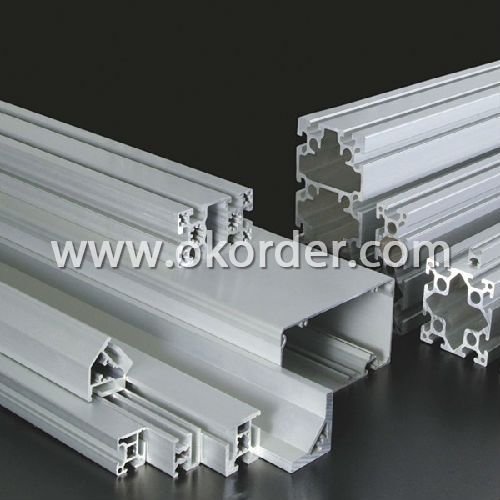
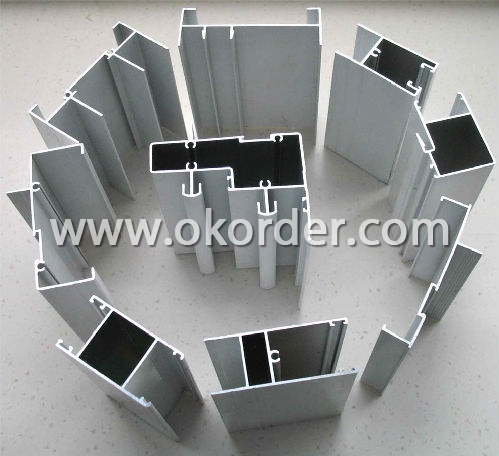
3 Packaging & Delivery of Aluminum Profiles 6081-T5
Packaging: Seaworthy package, bubble plastic bag inside, anti-moisture paper wrapped outside, covered with cartons, on wooden pallets, in containers.
Shipment: the goods will be delivered in 15-30days after getting the buyer's payment.
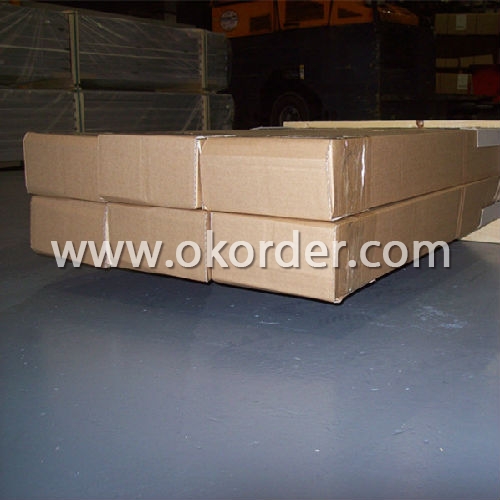
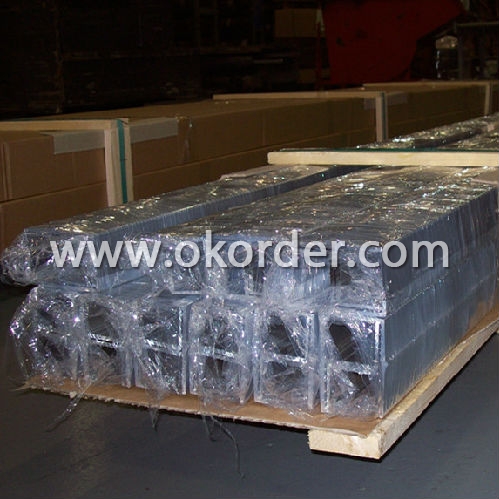
4 Production Flow of Aluminum Profiles 6081-T5
aluminium ingot & alloy→melting and casting→extrusion→powder coating→pouring rubber for heat insulation→checkout→packing→PVDF coating\anodizing\electrophoresis→put in products warehouse.
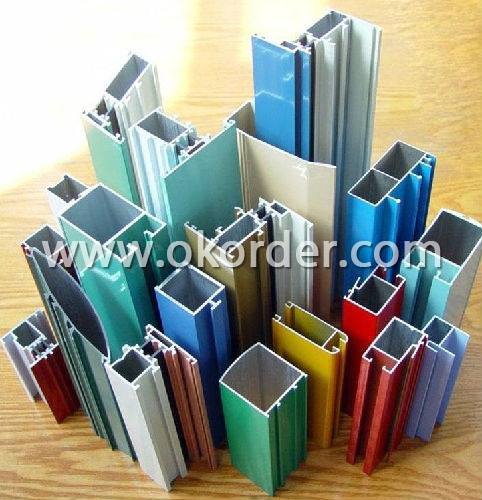
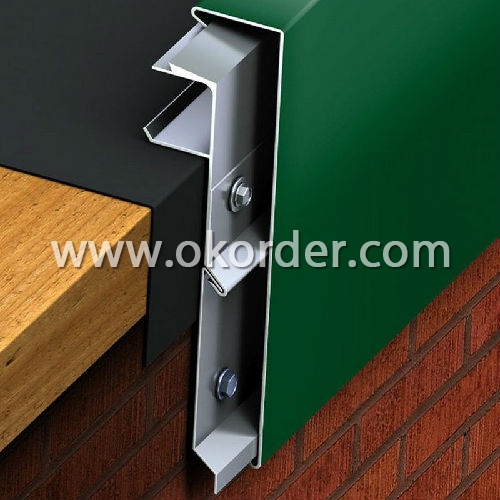
- Q: What are the different bending options available for aluminum profiles?
- There are several bending options available for aluminum profiles, depending on the specific requirements and desired outcomes. Some of the common bending methods for aluminum profiles include: 1. Roll Bending: This method involves passing the aluminum profile between a series of rollers to achieve the desired bend. Roll bending is typically used for larger and thicker profiles, as it provides a gradual and consistent bend. 2. Press Bending: Press bending uses a hydraulic or mechanical press to apply force and shape the aluminum profile into the desired form. This method is suitable for both small and large profiles and can achieve various bend angles. 3. Mandrel Bending: Mandrel bending involves inserting a mandrel, which is a rod or tube, into the aluminum profile to maintain its shape during the bending process. This method ensures precise and uniform bends, making it suitable for complex shapes and tight radius bends. 4. Stretch Bending: Stretch bending applies controlled stretching forces to the aluminum profile, allowing it to flex and bend. This method is often used for profiles with large radii and gentle curves. 5. Rotary Draw Bending: Rotary draw bending utilizes a die and a rotating arm to bend the aluminum profile around a specific radius. This method is highly accurate and commonly used for precise and repeatable bends. 6. Heat Bending: Heat bending involves applying heat to the aluminum profile to soften it before bending. Once the desired bend is achieved, the profile is cooled to retain its new shape. This method is suitable for profiles with complex shapes and sharp angles. Each bending option has its advantages and limitations, and the selection depends on factors such as the profile size, shape complexity, bend angle, and required precision. Consulting with a professional or a bending specialist is recommended to determine the most appropriate bending method for specific aluminum profile applications.
- Q: Do aluminum profiles have good thermal insulation properties?
- No, aluminum profiles do not have good thermal insulation properties.
- Q: Aluminum Alloy rail safety glass balcony design, Aluminum Alloy profiles for what is standard specifications?
- The specifications and sizes of aluminum doors and windows are mainly marked by the height dimension of the section of the profiles (used in aluminium alloy doors and windows, and the thickness of the door and window frames), and form a series of dimensions. Aluminum doors and windows profiles are 40, 45, 50, 55, 60, 65, 70, 80, 90, 100mm and other dimensional series. Among them, the size of aluminum alloy window is smaller, and the size of aluminum alloy door is larger.1, aluminum doors and windows dimensioning the same series, not necessarily aluminum windows and doors section shape and size are the same. The aluminum alloy door and window profiles of the same size series are quite complex in shape and size. Must be analyzed and treated in accordance with the drawings.2 、 the aluminum door and window profile is divided into solid section and hollow section according to the shape of the section, and the application of the hollow profile is larger.3, aluminum doors and windows profiles of wall thickness, for aluminum alloy window of not less than 1.4mm, with aluminum alloy door is not less than 2mm.4, aluminum door and window profiles of length, size, dividing ruler, double ruler and indefinite ruler three kinds. Fixed length generally not more than 6m, variable length is not less than 1m.
- Q: How do aluminum profiles compare to plastic profiles?
- Aluminum profiles and plastic profiles are commonly used in various industries for different applications. When comparing the two, there are several factors to consider. Strength and Durability: Aluminum profiles are generally stronger and more durable than plastic profiles. Aluminum has high tensile strength, allowing it to withstand heavy loads and resist deformation. Plastic profiles, on the other hand, are more prone to cracking or breaking under excessive stress. Weight: Aluminum profiles are heavier than plastic profiles. This can be an advantage or disadvantage depending on the specific application. Aluminum's weight can provide stability and strength, while plastic's lightweight nature can make it easier to handle and install. Corrosion Resistance: Aluminum profiles have excellent corrosion resistance properties. They can withstand exposure to various environmental conditions, making them suitable for outdoor applications. Plastic profiles, however, are not as resistant to certain chemicals or UV radiation, which can cause degradation over time. Flexibility and Design: Plastic profiles offer more design flexibility compared to aluminum profiles. Plastic can be easily molded into complex shapes and customized according to specific requirements. Aluminum, although less flexible, can still be shaped or extruded into different profiles with some limitations. Thermal and Electrical Conductivity: Aluminum profiles have superior thermal conductivity, allowing them to dissipate heat more effectively. They are often used in applications where heat dissipation is critical, such as electronics or heat sinks. Plastic profiles have lower thermal conductivity and are less suitable for such applications. Cost: Plastic profiles are generally more cost-effective than aluminum profiles. The manufacturing process for plastic profiles is simpler and cheaper, resulting in lower production costs. Aluminum profiles, on the other hand, require more advanced manufacturing techniques and additional finishing processes, making them relatively more expensive. In conclusion, the choice between aluminum and plastic profiles depends on the specific requirements of the application. Aluminum profiles offer superior strength, durability, and corrosion resistance, making them suitable for heavy-duty or outdoor applications. Plastic profiles, on the other hand, provide more design flexibility and cost-effectiveness, making them ideal for lightweight or customized applications.
- Q: Are aluminum profiles suitable for use in medical device manufacturing?
- Yes, aluminum profiles are suitable for use in medical device manufacturing. Aluminum is a lightweight and durable material that offers excellent mechanical properties, corrosion resistance, and versatility. It can be easily machined and formed into various shapes, making it ideal for creating custom components for medical devices. Additionally, aluminum profiles can be anodized or coated to further enhance their surface properties, ensuring compatibility with medical environments.
- Q: What is the difference between 6063-T5 and 6061-T6 aluminum profiles?
- At present, microstructure and mechanical properties of joint changes have some preliminary research on the welding of 6000 Aluminum Alloy, Department of the welding joint part of the alloy softening phenomenon is more serious, the main reason is the influence of softening joint welding thermal cycle of reinforcement particles occurred in aging and coarsening. The above research mainly concentrated in the softening behavior of welding, microstructure and heat affected zone of alloy, but on the 6063 Aluminum Alloy changes the mechanical properties of welding joints and welding thermal cycle and the relationship between the effect of artificial aging is also a lack of detailed research. The T5 condition is aging and natural cooling! The coefficient of deformation is small and easy to control! General hardness! T6 status is water cooled! Large coefficient of deformation! Not easy to control! High hardness!
- Q: Are aluminum profiles suitable for use as exterior walls in residential buildings?
- <p>Yes, aluminum profiles can be used for exterior walls in residential buildings. They offer several advantages such as durability, low maintenance, and resistance to corrosion. Aluminum profiles are lightweight, which makes them easier to install compared to heavier materials. They also have good thermal conductivity, which can be managed with proper insulation to maintain energy efficiency. Additionally, aluminum can be powder-coated in various colors, offering design flexibility. However, it's important to ensure that the aluminum profiles meet building codes and standards for structural integrity and weather resistance.</p>
- Q: This question asks for methods to prevent rust formation on aluminum profiles during the periods of storage and transportation.
- <p>To prevent rust on aluminum profiles during storage and transportation, follow these guidelines: 1. Keep aluminum profiles dry and clean, avoiding contact with moisture or corrosive substances. 2. Store profiles in a cool, dry place, away from direct sunlight and heat sources. 3. Use protective packaging materials to shield profiles from physical damage and moisture. 4. Apply a protective coating or sealant to the aluminum surface if it's exposed to harsh environments. 5. Regularly inspect stored profiles for signs of corrosion and address any issues promptly. By adhering to these practices, you can minimize the risk of rust formation on aluminum profiles during storage and transportation.</p>
- Q: The latest list of aluminum China
- Lear aluminum is also good Oh, A Well-Known Trademark in China, China energy-saving innovation enterprise ten, Hebei enterprises in Handan
- Q: How do you ensure proper electrical grounding with aluminum profiles?
- To ensure proper electrical grounding with aluminum profiles, it is important to follow a few steps. Firstly, it is crucial to clean the surface of the aluminum profiles thoroughly to remove any dirt, oil, or oxidation. This can be done using a suitable cleaning agent or abrasive pad. Next, make sure that the electrical connections are securely fastened to the aluminum profiles using appropriate connectors. Additionally, using conductive paste or gel can help improve the conductivity between the electrical connections and the aluminum profiles. Finally, regularly inspect the grounding system to check for any signs of damage or deterioration, and promptly address any issues that may arise.
1. Manufacturer Overview
| Location | Guangdong, China |
| Year Established | 1991 |
| Annual Output Value | Above US$50 Million |
| Main Markets | Mid East;Eastern Europe;North America |
| Company Certifications | ISO 9001:2000;ISO 14001:2004;OHSAS 18001 |
2. Manufacturer Certificates
| a) Certification Name | |
| Range | |
| Reference | |
| Validity Period |
3. Manufacturer Capability
| a) Trade Capacity | |
| Nearest Port | Nanhai Port |
| Export Percentage | 30%-50% |
| No.of Employees in Trade Department | 21-50 People |
| Language Spoken: | English;Chinese |
| b) Factory Information | |
| Factory Size: | Above 100,000 square meters |
| No. of Production Lines | Above 10 |
| Contract Manufacturing | OEM Service Offered;Design Service Offered |
| Product Price Range | Average |
Send your message to us
Aluminum Profiles Extrusion 6081-T5
- Loading Port:
- ShenZhen
- Payment Terms:
- TT or LC
- Min Order Qty:
- 5 Tons m.t.
- Supply Capability:
- 1000 Tons Per Month m.t./month
OKorder Service Pledge
OKorder Financial Service
Similar products
Hot products
Hot Searches
Related keywords




